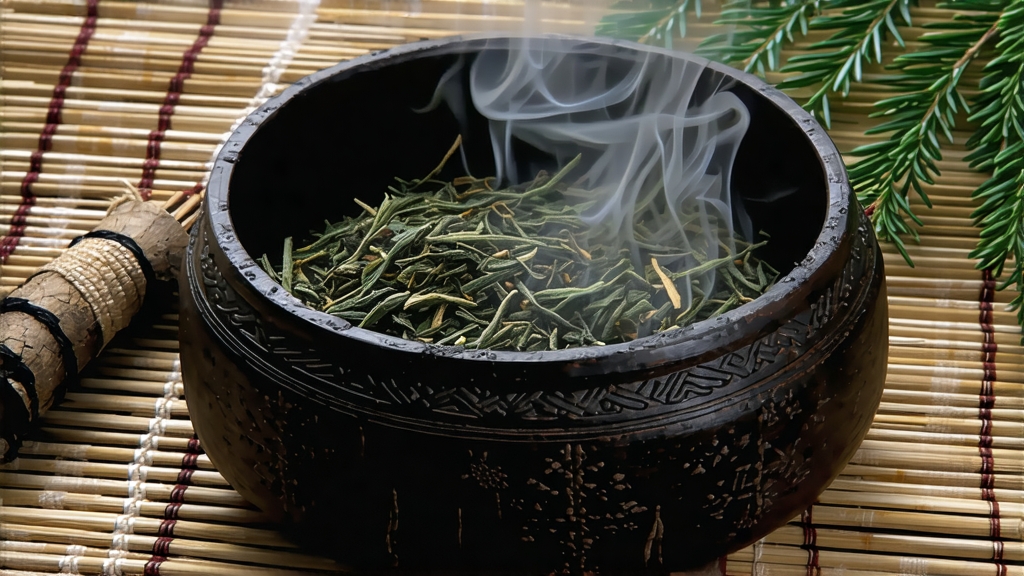
When most tea lovers outside China hear “black tea,” they picture a bright Ceylon or a malty Assam, yet the very word “black” was first applied to the smoky, wine-red liquor that sailed out of the Min River in 1640 under the name Lapsang Souchong. Hailing from Tongmu Guan, a protected enclave high in the Wuyi Mountains of northern Fujian, Lapsang Souchong is the primogenitor of all black tea; every keemun, every darjeeling, every breakfast blend owes its existence to the techniques first perfected in this 600-year-old village. Today the original pine-smoked version is a niche curiosity, while its unsmoked “new craft” cousin commands four-figure prices in Beijing auctions. Both styles share the same genetic material—an indigenous tea plant locally called xiao zhong or “small cultivar”—and the same mist-shrouded terroir where granitic cliffs force humid air to linger, slowing leaf growth and concentrating aromatic compounds. Understanding Lapsang Souchong therefore means tasting the moment when Chinese green-tea craftsmanship pivoted toward oxidation, and when global trade routes pivoted toward tea.
History: From Ming Border Guards to London Coffeehouses
Tongmu Guan was originally a Ming-dynasty military outpost guarding the mountain pass into Jiangxi. Soldiers needed a beverage that would keep on long patrols, so villagers experimented with prolonged withering and complete oxidation, then dried the leaves over pine fires to drive off residual moisture. The result was a tea that survived the humid trek to the port of Xiamen and still tasted vivid after months in a ship’s hold. By 1662, when Catherine of Braganza brought a chest to London, the English coined the term “bohea” (from the local name Wuyi) and declared it the fashionable alternative to coffee. The East India Company paid for it with silver, triggering the eventual trade imbalance that led to the Opium Wars. Thus, the smoky leaf from an obscure Fujian hamlet became the catalyst that rewrote 19th-century geopolitics.
Micro-Terroir: Why Only 120 km² Will Do
Authentic Lapsang Souchong enjoys the same protected-origin status as Champagne. The demarcated zone sits at 27° N, 600–1,400 m above sea level, where annual rainfall exceeds 2,300 mm and morning fog reduces direct sunlight by 30 %. The soil is a coarse, acidic granite grit low in phosphorus but rich in potassium and fluorine, forcing roots to struggle and thereby intensifying theanine. Surrounding broad-leaf forests exhale terpenes that settle on tea bushes, adding a natural camphor note echoed later by the pine smoke. Outside this micro-zone, even identical cultivars and identical craft fail to reproduce the sweet, cooling aftertaste locals call “rock rhyme.”
Cultivars: Xiao Zhong vs. Wuyi Qizhong
The original bush is a seed-propagated landrace known for tiny leaves, slow budding, and a peculiar cinnamic ester in its sap. In the 1980s researchers crossed it with Wuyi Shui-xian to create Wuyi Qizhong, a more frost-hardy clone that yields earlier but lacks the sap’s signature. Today, top-grade smoked Souchong is still picked from 80- to 120-year-old xiao zhong trees growing wild on cliff ledges reachable only by ladder, while unsmoked “wild Souchong” comes from these same ancient bushes harvested in late May when polyphenol ratios peak.
Plucking Standard: One Bud, Three Leaves, 90 Minutes
The rule is simple yet brutal: pluck must finish before the sun climbs above the canyon rim, because solar heat converts grassy hexenals into bitter linoleic acids. Experienced pickers work from 4:30 a.m. to 6:00 a.m., selecting the first bud still tented in a pinkish membrane plus three leaves angled at 45°. Anything larger oxidizes unevenly; anything smaller collapses into dust during rolling. A 60 kg harvest of fresh leaf reduces to just 12 kg of finished tea, explaining why imperial-grade Tongmu Souchong retails above USD 2,000 per kilogram.
Craft: The Eight-Step Dance Between Smoke and Fire
- With-Withering: Leaves are